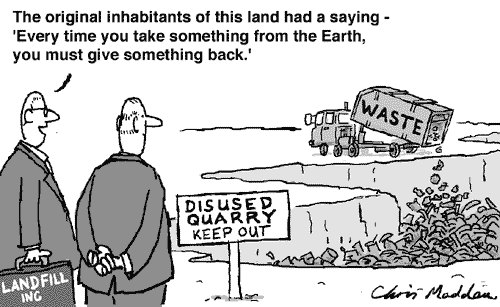Scientists: Dispersants May Delay Recovery of the Gulf By Years or Decades + Toxic Dispersants Files
Washington's Blog September 1, 2010

The government and BP claim that the combination of Corexit and crude oil is less toxic than crude oil by itself.
Is that true?
Well, scientists have found that when Corexit is applied to the actual crude oil from BP's well, it releases 35 times more toxic chemicals into the water column than would be released with crude alone.
And the tests conducted by the EPA which purport to show that dispersant plus crude is less toxic than oil alone used a combination of Corexit with Louisiana light crude oil. However, the oil coming out of BP's leaking well contains an unusually high concentration of methane. As CBS notes:
The oil emanating from the seafloor contains about 40 percent methane, compared with about 5 percent found in typical oil deposits, said John Kessler, a Texas A&M University oceanographer who is studying the impact of methane from the spill.
It is doubtful that the EPA used such unusually methane-rich oil in their testing.
More importantly, EPA toxicity tests on the dispersant-oil mixture were conducted at sea level pressures (in other words, the pressure at the surface of the ocean). But enormous quantities of Corexit have been applied 5,000 feet under the ocean at the leaking wellhead.
As the New York Times noted in May:
There has been significant research in response to spills over the past few decades, especially the Exxon-Valdez spill in Alaska in 1989 and the Prestige spill in 2002 off the coast of Spain.
But all of the scientific precedent is from spills from tankers or near shore.
"We are working with reliable knowledge from that science," Plumb said, "but it is limited and not across the scale or scope of the ecosystem we are in now."
Scientists and responders are prepared to deal with oiled birds and shoreline effects, because those are the usual problems. An ongoing oil spill a mile under water is unchartered ground.
"We've never dealt with this kind of deep water, we've never dealt with this amount of dispersants, we've never dealt with the Gulf," [Roger Helm, chief of the contaminants division of the Fish and Wildlife Service] said. "We're in a very early phase of the science here; there is not a lot of experimental work or practical work upon which to base the work we're doing."
Marine biologist and toxicologist Dr. Chris Pincetich - who has an extensive background in testing the effects of chemicals on fish - told me yesterday that scientists have no idea what compounds will be formed when Corexit dispersant and oil interact under the high pressures present at BP's deepwater spill site (Dr. Pincetich directed environmental toxicity testing as a consultant and lab supervisor for many years, and now works to protect endangered sea turtles at the Sea Turtle Restoration Project, http://www.seaturtles.org).
And as Scientific American notes, breakdown products from the dispersant might be toxic as well:
For example, more testing will be needed to determine if the breakdown of Corexit 9500 - either into other chemicals or when metabolized by animals - produces toxic products of its own. "In toxicology, it's quite often not the original compound that's the toxic entity," [toxicologist Cary Mitchelmore of the University of Maryland, who co-authored a National Research Council report on dispersants in 2005] notes.
Indeed, even Sergio Alex Villalobos, toxicologist for Nalco - maker of the Corexit dispersant - says:
Once it’s mixed with oil, that’s where you get the most impact, that’s where you see most of the toxicity.
Government Testing is "Embarrassing"
Dr. Pincetich says that he's "embarrassed" that the government is using inadequate tests regarding the toxicity of Corexit. For example, when I asked whether he thought the EPA's screening level for Corexit in the Gulf of 750 parts per million is based on sound science, Dr. Pincetich said no. He pointed me to a 1996 study which found that exposures of less than 20 ppm can adversely affect abalone.
Dr. Pincetich also noted that the tests being used in the Gulf are not the standard type of tests used to measure toxicity of long-term chronic exposure, but are typically only used for initial screening of effluent from coastal dischargers. There is no scientific evidence to support using only such a short-term, acute exposure test. The EPA training manual contains dozens of better testing protocols, and toxicity tests are usually run on 7 different species when there is a screening of unknown toxic chemicals involved (and even basic national pollution discharge standards require testing for 3 species), but - in the Gulf - the EPA has only been testing using 2 species.
Dr. Pincetich has also noted that EPA toxicity testing for Corexit is woefully inadequate, since EPA testing was only for mortality and only used a 48- and 96-hour time frame. His doctoral research found that fish that were alive at 96 hours after exposure to pesticide were dead at two weeks, so the chemicals were considered non-lethal for the purposes of the test:
Dr. Pincetich explained that many standardized EPA bioassay toxicity testing protocols exist to measure growth and reproduction in marine early life stage organisms, but EPA is just using the cheapest possible tests. He says that standard tests should be run, and BP should pick up the tab.
Corexit May Delay Recovery of the Gulf for Years ... Or Even Decades
Dr. Pincetich told me that he believes that use of dispersant may - in certain circumstances - delay recovery of the ecosystem for years.
Indeed, PhD toxicologist Ricki Ott noted in a New York Times Op Ed that dispersants like Corexit can persist in the ocean for decades:
[Dispersants] can linger in the water for decades, especially when used in deep water, where low temperatures can inhibit biodegradation.
Some experts have also said that the use of Corexit has prolonged by decades the presence of toxic crude oil, because the dispersant sinks the oil beneath the ocean surface, where it cannot be quickly broken down by sun, waves and microbes.
And the head of Lawrence Berkeley National Laboratory's Ecology Department - Terry Hazen - argues that the use of dispersants can delay recovery of ocean ecosystems by decades:
Hazen has more than 30 years experience studying the effects of oil spills. He says the oil will be damaging enough; toxic dispersants will just make it worse. He points to the 1978 Amoco Cadiz Spill off the coast of Normandy as an example. He says areas where dispersants were used still have not fully recovered, while areas where there was no human intervention are now fine.
As Hazen has noted:
"The untreated coastal areas were fully recovered within five years of the Amoco Cadiz spill," says Hazen. "As for the treated areas, ecological studies show that 30 years later, those areas still have not recovered."
Admittedly, chemicals other than Corexit were used in the Amoco Cadiz spill. But the precautionary tale still holds: chemicals should not be applied to oil spills unless scientists are positive that they will provide a net long-term benefit.
Disturbingly, Corexit is apparently still being sprayed in the Gulf. See this, this and this.
BP Gulf oil spill disaster: The effect on human health (video, 6 mn)
L'impact du dispersant Corexit sur la santé/BP Corexit Effects on Life (video VOSTF) + dossier dispersants
Toxicologists: Corexit “Ruptures Red Blood Cells, Causes Internal Bleeding”, "Allows Crude Oil To Penetrate “Into The Cells” and “Every Organ System"
BP Oil Dispersants Used Regularly Even After White House Order; Coast Guard Allowed It
North America faces years of toxic oil rain from BP oil spill chemical dispersants (+ videos)
BP Oil Spill: Gulf Water Sample Explodes When Chemist Tests For Toxicity (video + Breaking News)
La plupart des nettoyeurs de l'Exxon Valdez sont morts/Almost all the Exxon Valdez oil spill cleanup workers are dead (video, 1' 37 VOSTF)
BP Gulf Oil Spill: Massive annihilation of sea creatures and wildlife and Long-Term Effects on Food Chain (+video)
BP Tells Cleanup Workers They'll Be Fired If They Wear Respirators (+ video)
All the articles and documentaries: BP Gulf of Mexico Oil spill
http://georgewashington2.blogspot.com
http://www.internationalnews.fr/article-scientists-dispersants-may-delay-recovery-of-the-gulf-by-years-or-decades-56419726.html


![Géopolitique : Union transatlantique, la grande menace, par Alain De Benoist [tribune libre] Géopolitique : Union transatlantique, la grande menace, par Alain De Benoist [tribune libre]](http://www.breizh-info.com/wp-content/uploads/2014/06/tafta.jpg)













































